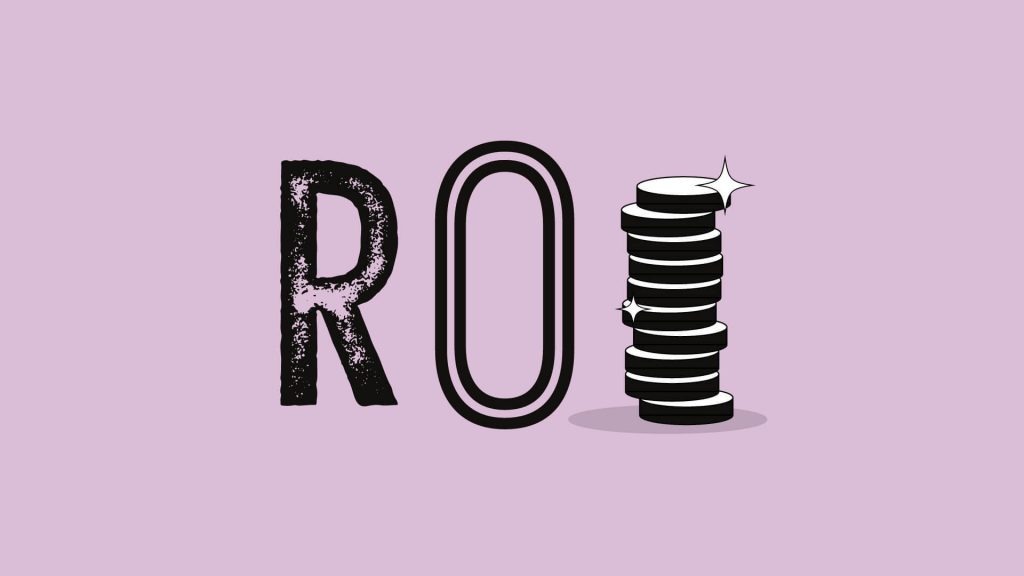
In the bustling world of hospitality, where every impression counts, and competition is as hot as a kitchen grill, standing out isn’t just an option – it’s a necessity.
In the hospitality industry, perhaps more than any other, the adage ‘follow your customer’ takes on a nuanced significance. It’s not merely about adopting a single route to market; it’s about mastering the entire marketing mix to find the sweet spot that resonates with a diverse clientele. With ever-evolving consumer behaviours and expectations, particularly in a market as vibrant as the UK, hospitality businesses must blend traditional tactics with digital innovations to create a multi-faceted approach.
By combining the strategic use of digital platforms and impactful branding with customer engagement strategies, you can ensure your venue finds its individual space and cuts through the noise created by the big players.
In the hotel industry, your brand represents much more than just a logo or a name, it should be fundamentally entwined with the entire customer experience. Forging an immediate connection with your target audience in today’s noisy, competitive marketplace cannot be overstated.
With an endless variety of accommodation options available, it’s essential to not only focus on cultivating a brand that resonates deeply with your ideal customer but also to showcase the unique personality and features of your venue. A well-defined brand should stick in the mind like a signature dish, leaving a lasting impression that helps transform first-time guests into lifelong fans. By engaging customers on an emotional level, developing consistent and memorable branding elements and a tone of voice that’s authentic to your business, you can ensure every interaction reflects your establishment’s core values and ethos and builds a powerful brand presence that stands out. This strategic branding is not merely about aesthetic appeal but about creating a holistic experience that guests will cherish and remember, compelling them to return time and again.
Identifying where to place engaging and even humorous brand touchpoints can significantly enhance your brand’s value and memory hooks. During a hotel stay, there are more opportunities than almost any other business to introduce personality and underline your brand’s character, from do-not-disturb door hangers and unusual keys to boring lift walls—the opportunities are endless. This is not to suggest that they should be filled with offers and promotions—but engagement opportunities that raise a wry smile or promote an Instagram share.
During lockdown, a lot of brands got really creative with their marketing with outside beaches in car parks and greenhouse-style pods for dining, which built lots of social sharing opportunities. In recent years it feels like there has been a step back from these more disruptive techniques—but they still provide a huge opportunity for the smaller business to create a memorable experience.
In an era dominated by digital interactions, the strategic use of physical print materials in hospitality marketing offers a tangible touchpoint that can significantly enhance the customer experience. Even as digital platforms proliferate, the sensory impact of printed materials (be it brochures, menus, or promotional flyers) provides a unique and memorable connection to your brand. This tactile element of marketing is not just about nostalgia; it’s about differentiation and creating deeper engagement.
Incorporating print effectively into the digital marketing mix can amplify visibility and reinforce brand identity in ways that digital mediums alone cannot achieve. By intertwining high-quality, physical marketing materials with digital strategies, businesses can touch the customer’s senses, add value to their experience, and leave a lasting impression that encourages return visits and word-of-mouth recommendations.
For hospitality brands looking to stand out in a crowded marketplace, embracing this blend of old and new could be key to building enduring customer relationships.
Creating a web experience that can compete with global giants on a budget that’s only a fraction of theirs might sound like a tall order, but it’s the challenge facing every independent hotelier.
Competing against these behemoths, who boast seemingly limitless marketing resources and advanced tech, requires clever strategy and innovative thinking.
This involves not just aesthetically pleasing web design but also ensuring that your website’s user journey, functionality and user experience is top-notch. It may sound like stating the obvious—but the golden rule for any hotelier is to streamline the booking process, making it as seamless and intuitive as possible. While budget constraints might tempt you to opt for a cheaper online Property Management System (PMS) solution, it’s crucial that this cost-saving choice doesn’t complicate the booking experience. If the system is not straightforward enough for your average 12-year-old to navigate, it’s not worth the savings and visitors will hop straight over to the simplest OTA app on their phone. A clunky or complex booking process will deter potential guests, undermining your hotel’s perceived value and accessibility. Therefore, investing in a robust, user-friendly PMS is essential for converting website visitors into booked guests.
This approach improves customer satisfaction and boosts your competitive edge in a market dominated by larger players.
Despite budget constraints, the goal should be to deliver an online experience that not only competes but sets benchmarks for guest satisfaction when they arrive at your property.
The technical ‘plumbing’ of such journeys can involve integrating various software products. Property Management Systems (PMS), Customer Relationship Management (CRM) systems, email platforms and upsell apps that must all work together to ensure a flawless guest experience that also provides your sales teams with the insights they need to hit your financial targets.
Balancing style with functionality to provide an easy-to-manage platform that integrates all of your sales channels for maximum efficiency is an achievable goal. Even so, it’s worth investing in up-front R&D of these platforms and how they can work together before committing yourself. It can be a costly mistake both in web sales and back-of-house operations to pick the wrong platforms.
Amazing website design is great, but it needs to pay the bills. A seamless user journey that is engaging with few hassle factors for bookings and enquiries alike still needs feeding with visitors.
To effectively turn your hotel’s website into a machine of guest conversion, you need to focus on SEO, content marketing, digital marketing, and social media engagement from day one–and continuously! Some basic tips from the hot desk of digital marketing at The Creative Branch:
- Enhance your website’s visibility by focusing on keyword optimisation.
- Identify and target specific keywords potential guests might search for related to your location, amenities, and unique offerings.
- Strategically use these keywords in your website’s content, meta descriptions, and URLs.
- Prioritise local SEO to enhance visibility in local search queries by claiming your Google My Business listing, getting listed in local directories, and using region-specific keywords.
- Ensure your website is mobile-friendly, as many bookings are made on mobile devices, and Google prioritises mobile-optimised sites in its rankings.
- Engage potential guests by creating compelling content that provides real value. This could include blog posts about local attractions, events, or travel tips in your area, helping to position your hotel as a local authority.
- To enhance engagement, incorporate video content, such as virtual tours, guest testimonials, or behind-the-scenes looks at your hotel.
- Encourage guests to share their experiences, leveraging user-generated content that provides fresh, authentic content and enhances credibility.
- Develop a solid digital marketing strategy, focusing on email marketing, to keep past guests engaged and encourage repeat visits. To maintain interest, use personalised offers and regular updates about your hotel.
- Invest in pay-per-click (PPC) advertising to appear at the top of search results for targeted keywords, particularly during peak booking seasons or special promotions.
- Implement retargeting strategies to capture potential customers who visited your site but did not book, increasing the chances of conversion.
- Strengthen your brand presence on social media by posting regularly and interacting with followers. This includes responding to comments, sharing relevant content, and engaging in conversations.
- Run competitions or special promotions exclusive to your social media followers to increase engagement and direct traffic to your site.
- Partner with travel bloggers and influencers to reach a broader audience; ensure these partners align with your brand values and have an engaged following.
Navigating the tricky waters of working with, yet competing against, Online Travel Agencies (OTAs) is a familiar challenge for many in the hospitality market. While these giants offer a buffet of visibility, their hefty commissions can gobble up your profitability. The goal is to strike a delicate balance: encouraging more direct bookings to avoid these commissions while still leveraging the immense reach and customer base that OTAs provide.
To achieve this, it’s vital to develop a robust digital strategy that optimises both avenues. First, enhance your hotel’s own online presence to make direct bookings more attractive and convenient for guests. At the same time, use OTAs to your advantage. They are not just necessary evils but can also be powerful marketing tools. They increase your hotel’s visibility across different markets, which you might not have the budget to reach otherwise. Therefore, maintain a strong presence on these platforms to get your hotel in front of new customers but focus on converting these into direct bookers in the future. This can be achieved by offering incentives for guests to book directly next time, such as discounts on future stays, free upgrades, or additional amenities.
Capture their details and include them in your email marketing campaigns. Keep them informed about upcoming offers and remind them of the benefits of booking directly.
In essence, while OTAs are an integral part of the modern hospitality booking landscape, your digital strategies should always aim to give you the best of both worlds: maximising exposure through OTA platforms whilst cultivating an appealing, direct booking experience that boosts your profitability and builds customer loyalty. This approach mitigates the reliance on OTAs and enhances your competitive edge by fostering direct relationships with your guests.
We bring decades of experience to the table, serving a vast menu of hospitality businesses—from cosy lodges and buzzing restaurants to grand hotels and expansive resort complexes.
Armed with years of specialised experience and a deep understanding of the hospitality industry’s nuances, we are uniquely positioned to help your business not just meet but exceed its marketing goals. By combining the strategic use of digital platforms with impactful branding and customer engagement strategies, we can ensure your hospitality business is thriving in this complex market.
Get in touch for more details on our experience supporting hospitality businesses and how we can help you.

